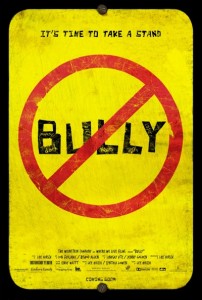“October Baby” Is Not As Controversial As Its Supporters Claim
Posted on March 31, 2012 at 8:00 am
“October Baby” exceeded expectations in its opening weekend last week, making a respectable $1.7 million in only 390 theaters. It is the story of a college student with multiple health problems who finds out for the first time that she was adopted and that her physical problems are the result of a failed abortion. She goes on a journey with a friend to find her birth mother.
The reaction from critics was lukewarm at best, with only a 24 percent positive rating on Rotten Tomatoes, which also shows a healthy 89 percent approval from audience members. That kind of disparity is not unusual, of course, because audiences are self-selected and those who make the effort to register their reactions online are a smaller self-selected subset motivated by strong feelings.
I’m always glad when a movie finds its audience, but it bugs me that the movie’s producers are trying to make the responses to the film into some sort of controversy, with some support from commentators. I’d like to provide some clarification.
The producers are correct that it was a mistake for Hollywood studios to turn them down, as ticket sales show. There is a substantial audience for this kind of movie and it is foolish to overlook (and underestimate) them. Given the response to this movie, I believe that will change and I look forward to more resources being made available for better explorations of these vital themes. And I respect the producers’ allocation of 10 percent of the profits of the film to the Every Life is Beautiful Fund, supporting “frontline organizations helping women face crisis pregnancies, life-affirming adoption agencies and those caring for orphans.” Both those who believe in a woman’s right to choose and those who oppose abortion should be united on behalf of organizations that support reproductive health, pregnant women, and alternatives for those who want to carry their babies to term.
But the producers and commentators are wrong in saying that people who do not like the movie should be dismissed as biased left-wing abortion-supporters. No one should make that claim unless they are willing to acknowledge that their own reaction to the film is just as likely to be affected by their political beliefs. And no one should use language to describe another person’s political or religious views that the other person does not consider accurate. It would be wonderful if good intentions were all that was necessary to make a good movie, but that is not the case. Critics who reviewed the film as a movie and not as a piece of advocacy were entitled to critique it on that basis. When TimesWatch, which is upfront about its mission to “reveal the New York Times’ liberal political agenda” says that the Times review by my friend Jeannette Catsoulis “seethed with anger and evident indignation that pro-lifers still existed in this day and age,” it is itself seething so hotly that it overlooks what Catsoulis really said: she did not like the movie because she thought it presented its arguments in an inflammatory and skewed manner. In particular, she points to a significant scene in which a nurse played by Jasmine Guy speaks in Hell House terms about her experiences assisting in an abortion clinic. She says that the movie communicates in the language of “guilt and fear” and that it “traffics primarily in soapy melodrama and false compassion.”
I agree with Catsoulis’ assessment of the film. There are some affecting moments but overall it undermines its points with heavy-handedness and weak performances. Even one of its strongest supporters admitted that its storyline is “sappy” and that it has poor pacing and under-developed characters. Others will disagree. That is true of any film and that is part of what makes it worthwhile and satisfying to talk about the movies we watch. But we have to be able to do that without trying to discredit those who see them differently. I especially object to those who complain about criticism of “October Baby” by generalizing about people of “faith,” assuming that the term is equivalent to conservative Christians who oppose abortion. There are many faiths and there are many ways of interpreting and honoring God. It does not help bring us closer to understanding and commonality to use divisive language like “faith-based” when what it really refers to is just one subset of the world of believers. I really liked the part of the film where the Christian girl gets some wise and compassionate counsel from a Catholic priest. I wish the commentary about the film embraced that kind of ecumenicalism.
It also bothers me when supporters of the film claim that it is fair to both sides. The film’s promotional materials say that it “honestly and evenhandedly invites audiences to explore their own views of life’s value and the importance of their choices.” It is not even-handed. It has a clear point of view. There is nothing wrong with advocacy on behalf of a cause you feel passionate about, as long as you are honest about what you are doing. Failing to do so opens the people behind this film up to criticism like that from Catsoulis about the legitimacy of the way they frame the issues and the limits of the film’s notion of forgiveness.
As happens much too often in our polarized us/them debates these days, the claim of “controversy” is inflated and more inspired by marketing than by any effort to “explore” these painful and wrenching issues. This is a movie about one of the most contested of all debates and no one should suggest that the people who made it and the people who see it will not bring to it their views on abortion. But we should not let anyone make it more than that by describing those views in heightened and divisive terms or pretend that all criticism of the film is based on its message and not its story-telling. It is nice that the film promotes forgiveness but it would be better if it promoted respect and finding common ground.
The film-makers have said that they wanted this film to appeal to an evangelical audience. On their website they speak of the movie’s “ministry impact” and urge churches to arrange for congregational viewings. But they also want to expand its reach to show outsiders that they should not stereotype evangelicals. Filmmaker Jon Erwin said, “ if there’s a Christian virgin character, she’s the nerd. I wanted to swing the pendulum to say Christian home-schooling virgin teenagers, of which I was one—we’re not that weird!” I agree that mainstream media too often caricatures people of faith and those who oppose abortion rights and I like the way “October Baby” shows us some nice, normal college students who are committed Christians. If the supporters of the film and the people behind it also make some progress in swinging the pendulum on the way they characterize those of different faiths and supporters of abortion rights, we might get further with those conversations we all agree we need to have.




